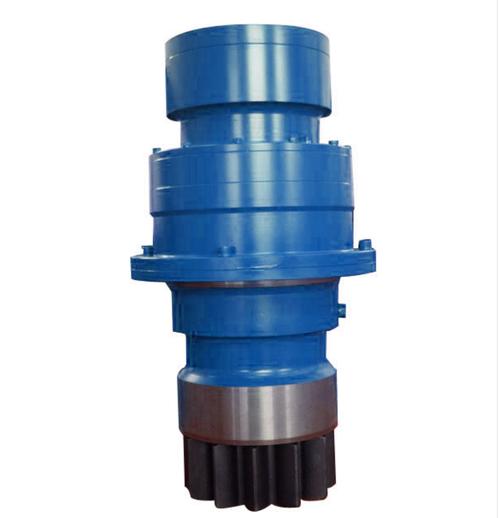I Hydraulic motor The following types are available for your model selection:
1. BM series rotary line hydraulic motor: manufactured by our company Cycloid hydraulic motor It can replace the well-known brand Lithuanian M+S, Danfoss series products and Eaton series products in the UK.
2. Plunger pump motor: external five-star NHM series products, internal five-star swing cylinder motor INM series products, which can replace Spanish SAI, Danison and Cassini MR series products.
3. Emulsified oil motor: The emulsified oil motor of MS series products can replace the MS series products of Portland, the Netherlands, and the MCR series products of Lituole, France.
4. Internal curve diagram Hydraulic motor: QJM bearing ball motor
II Hydraulic winch (Crane) includes: side pull hydraulic winch, empty hook free fall hydraulic winch, universal hydraulic winch, which can be customized according to customer regulations.
3、 Hydraulic press Planetary reducer : XHC rotating equipment, XHSC transmission system, GFT walking Reducer ,GFB Slewing reducer 。
Common problems and solutions of hydraulic motor
(1) The speed is smaller than the low torque
1. The oil supplied by the hydraulic oil pump is not enough
1) Motor speed ratio is insufficient
2) Filter screen of oil suction filter is blocked
3) The residual oil in the fuel tank is not enough or the oil removal pipe is small, which makes it difficult to remove the oil
4) Tight sealing, no leakage, gas invasion inside
5) Oil viscosity is too high
6) The radial and axial clearance of hydraulic oil pump is too large, and the internal leakage is enlarged
Solution:
1) Find out the reason and carry out adjustment
2) Clean or replace filter element
3) Top up the remaining oil and increase the pipe diameter moderately to make the oil suction smooth
4) Tighten relevant connectors to avoid leakage or gas intrusion
5) Select hydraulic oil with low viscosity
6) Properly repair the hydraulic oil pump
2. Insufficient output steam pressure of hydraulic oil pump
1) High efficiency of hydraulic oil pump is too low
2) The regulating working pressure of speed control valve is not enough or common faults occur
3) The friction resistance of oil pipeline is too large (the pipeline is too long or too thin)
4) The viscosity of the oil is small and the internal leakage is large
Solution:
1) Check the common faults of hydraulic oil pump and eliminate them in many ways
2) Check the common faults of speed control valve, and raise the working pressure again after clearing
3) Replace the pipeline with large diameter or try to avoid the length
4) Check the sealing condition of the internal leakage position, and replace the hydraulic oil or seal
3. Hydraulic motor leaks
1) The fusion surface of the hydraulic motor is not tightened or the seal is not good, and there is leakage
2) The internal parts of the hydraulic motor are worn and leaking seriously
Solution:
1) Tighten the welding surface to check the sealing condition or replace the sealing ring
2) Check the damaged position, and sharpen or replace the parts
(2) Leakage
1. Internal leakage
1) The oil baffle is severely worn
2) Excessive radial clearance
3) The oil baffle and the inner hole of the engine block are worn, and the radial clearance is too large
4) Play yellow fatigue
5) The plunger pump and engine block are severely worn
Solution:
1) Check the surface of oil baffle and repair it in many ways
2) Check and adjust the radial clearance to the required range
3) Sharpen the inner holes of engine block and oil baffle plate
4) Replace the pop-up
5) Grind the engine block hole and reconfigure the plunger pump
2. External leakage
1) Oil end seal, worn
2) The sealing ring at the rear cover plate is damaged
3) There is waste on the fusion surface or the foundation bolt is not tightened
4) Tee joint is not sealed tightly
Solution:
1) Replace the seal ring and find out the cause of wear
2) Replace the sealing ring
3) Check, eliminate and tighten the foundation bolts
4) Tighten the tee joint
(3) Noise
1) The sealing is not tight, and there is gas invasion inside
2) The gear oil is polluted by the environment, and bubbles penetrate
3) Coupling not concentric
4) Excessive gear oil viscosity
5) The axial specification of the hydraulic motor is severely worn
6) Leaves worn
7) Poor contact between the leaf and the motor stator, with impact
8) Motor stator worn
Solution:
1) Check the seals at relevant positions and tighten the joints
2) Replace the cleaned gear oil
3) Calibrate the same boat
4) Replace the hydraulic oil with low viscosity
5) Sharpen the cylinder bore. Re allocation plunger pump
6) Repair or replace as much as possible
7) Carry out renovation
8) Repair or replace. In case of wear and tear due to solid elastic yellows, replace the elastic yellows with smaller bending stiffness


![]()

